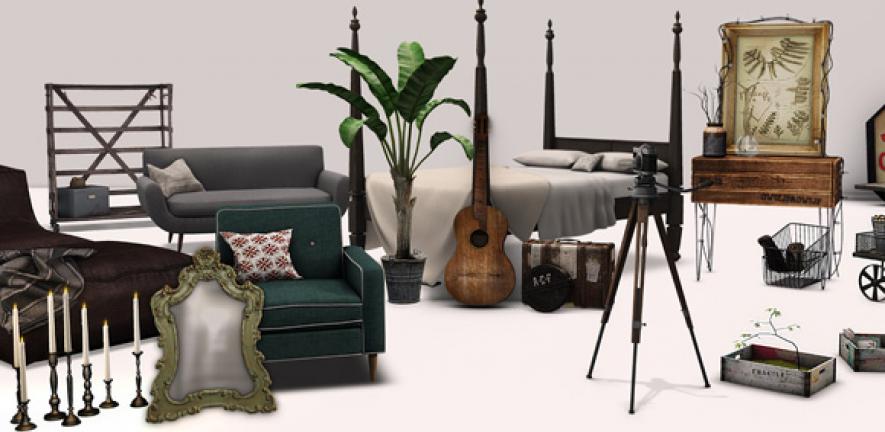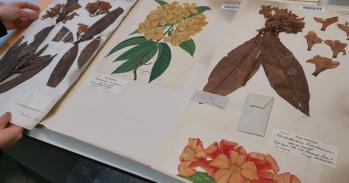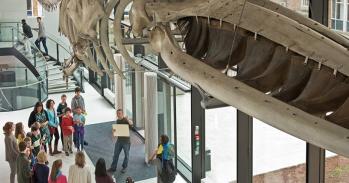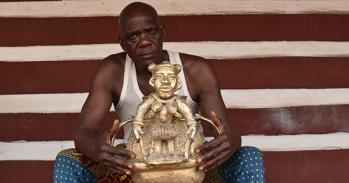
Things structure our lives. They enrich us, embellish us and express our hopes and fears. Here, to introduce a month-long focus on research on material culture, four academics from different disciplines explain why understanding how we interact with our material world can reveal unparalleled insights into what it is to be human.
Things structure our lives. They enrich us, embellish us and express our hopes and fears. Here, to introduce a month-long focus on research on material culture, four academics from different disciplines explain why understanding how we interact with our material world can reveal unparalleled insights into what it is to be human.
Studies of material culture focus upon things not just as material objects, but also on how they reflect our meanings and uses.
John Robb, Simon Goldhill, Ulinka Rublack, Nicholas Thomas
From the tools we work with to the eyeglasses and dental implants that improve us, our bodies are shaped by the things we use. We express and understand our identities through clothing, cars and hobbies. We create daily routines and relate to each other through houses and workplaces. We imagine place, history and political regimens through sculptures and paintings.
Even when we think we are dealing with abstract information, the form it takes makes a huge difference. When printing liberated the written word from the limited circulation of handwritten manuscripts, the book and the newspaper became fundamental to religious and political changes, and helped create the modern world.
Studies of material culture focus upon things not just as material objects, but also on how they reflect our meanings and uses. Throughout the humanities and social sciences, there is a long tradition of thinking principally about meaning and human intention, but scholars are now realising the immense importance of material things in social life.
At the core of material culture studies is the question of how people and things interact. This is a simple, sweeping question, but one long overlooked, thanks to historically dominant philosophical traditions that focus narrowly on human intention. In fact, it’s only in the past decade that scholars have posed the question of material agency – how things structure human lives and action.
Material culture studies have emerged as central in many disciplines across the University of Cambridge. In archaeology and history, scholars see material objects as fundamental sources for the human past, counterbalancing the discourse-oriented view that written texts give us. Should we use historical sources to see what people think they ate, or count their rubbish to find out what they really consumed? Combining the two gives us answers of unprecedented scope.
Geographers ask why it makes a difference whether workplaces are organised into separate offices or open-plan cubicles. Literary scholars draw attention to how experience and meaning are built around things, like Marcel Proust’s remembering of things long past as a madeleine cake is dipped in tea; even books themselves are artefacts of a singular and powerful kind. Likewise, studying anatomical models and astronomical instruments empowers an understanding of the history of science as a practical activity. And anthropologists explore the capacity of art to cross cultures and express the claims of indigenous peoples.
Material things are also at the heart of new fields such as heritage studies. Memory itself is material, as we’ve seen recently in the USA, where whether to keep or tear down statues of historic figures such as Confederate generals can polarise people.
Unlike most newly emerging fields in the sciences, material culture studies are grounded in a sprawling panoply of related approaches rather than in a tightly focused paradigm. They come from a convergence of archaeology, anthropology, history, geography, literary studies, economics and many other disciplines, each with its own methods for approaching human–thing interactions.
The reasons for this interest are not hard to find. The University offers a rare combination of three essential foundations for the field. One is world-class strength in the humanities and social sciences, sustained by institutions like the Centre for Research in the Arts, Social Sciences and Humanities (CRASSH), an essential venue for interdisciplinary collaboration as shown by its 'Things' seminar series (see panel).
Most human dilemmas are material dilemmas in some way
The second is the capacity for a huge range of scientific analyses of materials. The third is our immensely varied museum collections: the Fitzwilliam Museum’s treasures; the Museum of Classical Archaeology’s 19th-century cast gallery; the Museum of Archaeology and Anthropology’s worldwide prehistoric, historic and ethnographic collections; and many others. Where else can scholars interested in the material aspect of Victorian collecting study Darwin’s original finches or Sedgwick’s and Scilla’s original fossils, boxes, labels, archives and all?
Whether it’s work on historic costume, craft production, religion or books, the study of material culture offers unparalleled insights into how humans form their identities, use their skills and create a sense of place and history.
But it is not only a descriptive and historical field. Most human dilemmas are material dilemmas in some way. Where did our desire for things come from and how did the economics of consumerism develop? How can we organise our daily lives to reduce our dependence on cars? Should we care where the objects we buy come from before they reach the supermarket shelves? How do repatriation claims grow out of the entangled histories of museum objects?
The shape of this new field is still emerging, but Cambridge research will be at the heart of it.
Professor John Robb is at the Department of Archaeology, Professor Simon Goldhill is at the Faculty of Classics, Professor Ulinka Rublack is at the Faculty of History and Professor Nicholas Thomas is at the Museum of Archaeology and Anthropology.
Curious objects and CRASSH courses
You’ve had a difficult time lately. You’re thinking that all this bad luck might be more than coincidence. You trim your nails, snip some hair and bend a couple of pins. You put them in a bottle with a dash of urine, heat it up and put it in a wall. That’ll cure the bewitchment, you say to yourself.
Making a ‘witch bottle’ like this would be an entirely reasonable thing to do 400 years ago. It would also be reasonable to swallow a stone from a goat’s stomach to counteract poisoning and hide an old shoe in a chimney breast to increase the chance of conceiving.
“All of these objects took on layers of meaning for their owners, and the fact these strong connections existed at all gives us glimpses of people’s beliefs, hopes and lives,” says Annie Thwaite, a PhD student in the Department of History and Philosophy of Science. She is also one of the convenors of a seminar series on ‘Things’ at the Centre for Research in the Arts, Social Sciences and Humanities (CRASSH).
“Material culture was a crucial part of medicine in the 17th century. Objects like witch bottles are often dismissed as ‘folkish’. But by investigating the bottles’ architectural and geographical situation, their material properties and processes, you start to look through the eyes of their owners. Fearful of supernatural intrusion into their homes and bodies, people would go to great efforts to use something they regarded as a legitimate element of early modern medical practice.”
Charms and amulets, votives and potions, myths and magic will be discussed as this year’s ‘Things’ seminars begins a new focus on imaginative objects.
“Like material culture studies, the seminar series is broad and varied,” she explains. “We might just as easily examine the skills required to craft objects as the power of objects to become politicised.
“Things matter greatly to humans. We have short lives and our stuff outlives us. While we can’t tell our own story, maybe they can.”

The text in this work is licensed under a Creative Commons Attribution 4.0 International License. For image use please see separate credits above.




